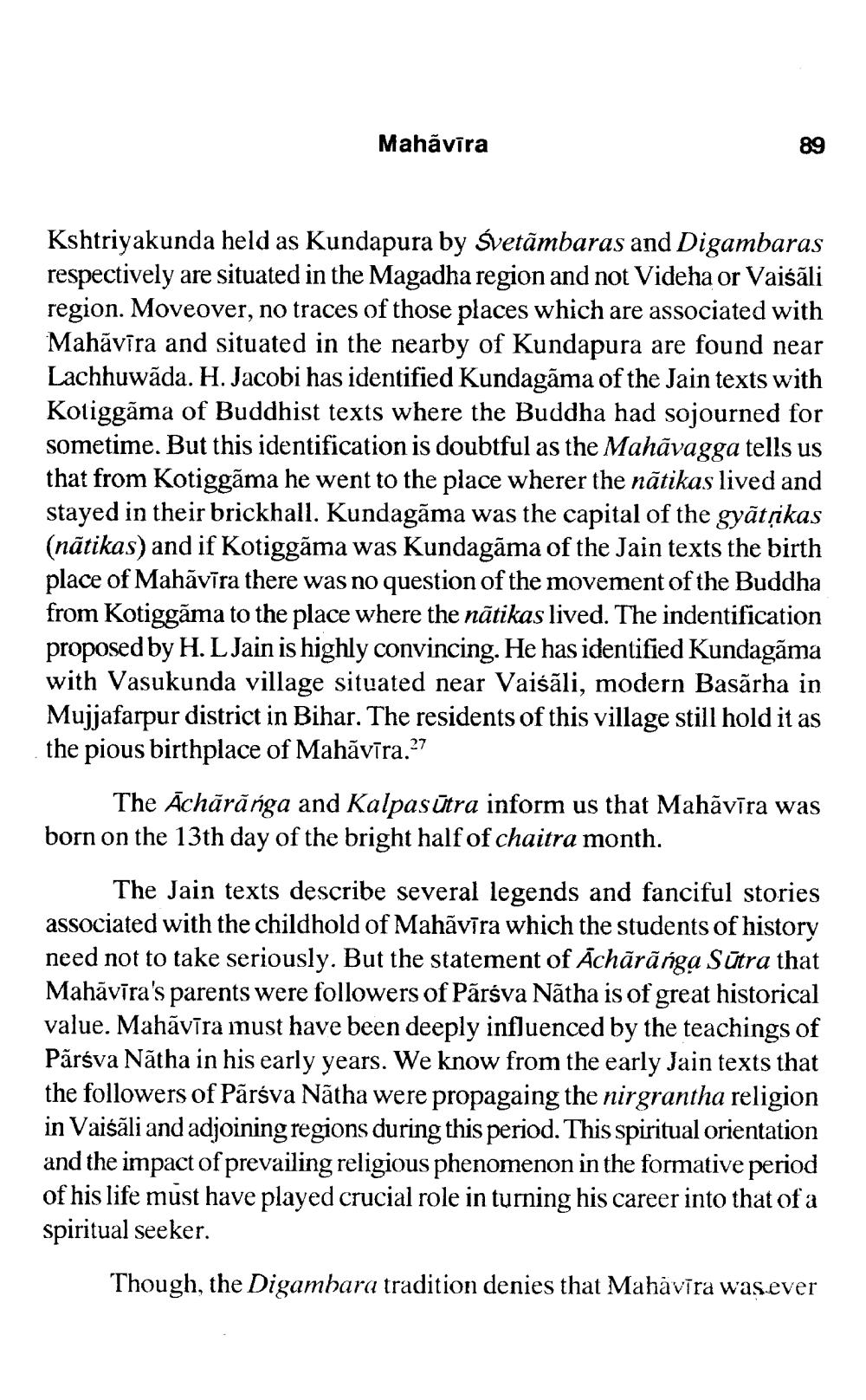________________
Mahavira
9
Kshtriyakunda held as Kundapura by Svetāmbaras and Digambaras respectively are situated in the Magadha region and not Videha or Vaiśāli region. Moveover, no traces of those places which are associated with Mahāvīra and situated in the nearby of Kundapura are found near Lachhuwada. H. Jacobi has identified Kundagāma of the Jain texts with Kotiggãma of Buddhist texts where the Buddha had sojourned for sometime. But this identification is doubtful as the Mahāvagga tells us that from Kotiggãma he went to the place wherer the nãtikas lived and stayed in their brickhall. Kundagãma was the capital of the gyātrikas (nātikas) and if Kotiggãma was Kundagāma of the Jain texts the birth place of Mahāvīra there was no question of the movement of the Buddha from Kotiggãma to the place where the nātikas lived. The indentification proposed by H. L Jain is highly convincing. He has identified Kundagāma with Vasukunda village situated near Vaišãli, modern Basãrha in Mujjafarpur district in Bihar. The residents of this village still hold it as the pious birthplace of Mahāvīra.27
The Achărănga and Kalpasūtra inform us that Mahāvīra was born on the 13th day of the bright half of chaitra month.
The Jain texts describe several legends and fanciful stories associated with the childhold of Mahāvīra which the students of history need not to take seriously. But the statement of Achărănga Sūtra that Mahāvīra's parents were followers of Pārśva Nãtha is of great historical value. Mahāvīra must have been deeply influenced by the teachings of Pãrýva Nãtha in his early years. We know from the early Jain texts that the followers of Pãrśva Nãtha were propagaing the nirgrantha religion in Vaiśāli and adjoining regions during this period. This spiritual orientation and the impact of prevailing religious phenomenon in the formative period of his life must have played crucial role in turning his career into that of a spiritual seeker.
Though, the Digambara tradition denies that Mahāvīra was.ever




